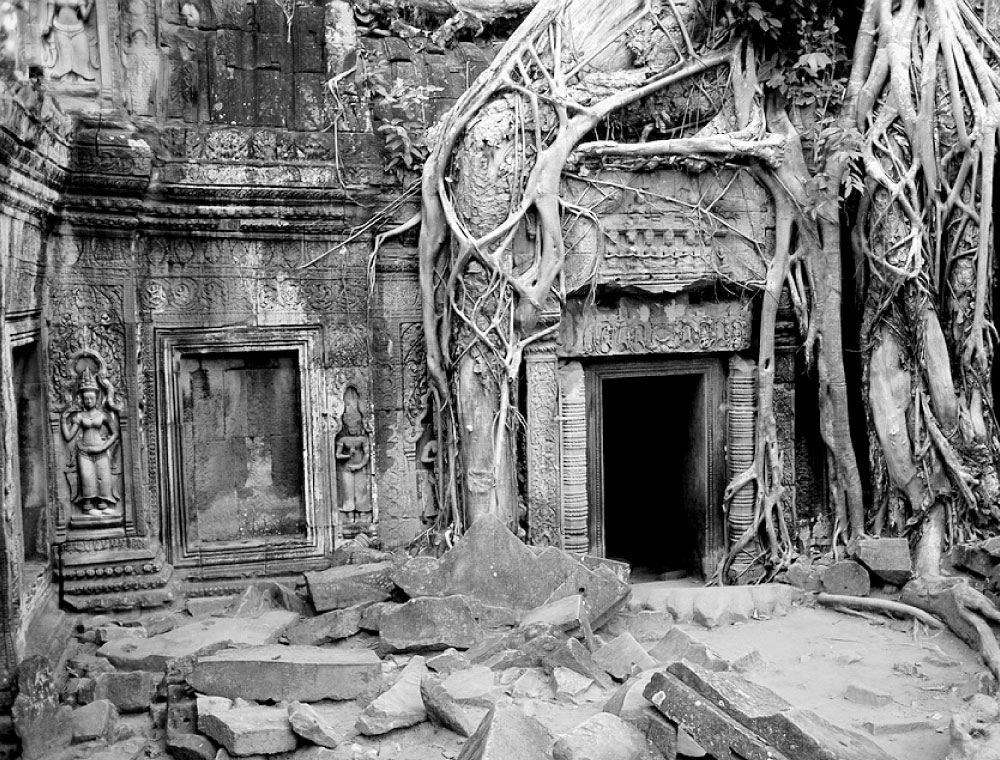
Set with picture perfection near the base of the Elephant Mountains on the Kampong Bay River, the Provincial Capital of Kampot City is of quite different character than the much more heavily touristy beach town of Sihanoukville. Quiet lanes, classic French colonial and Chinese architecture, and very few tourists all lend to Kampot’s quaint, welcoming, and small town ambiance. Visitors come to Kampot for a taste of provincial Cambodia and relaxed atmosphere. Kampot also serves as a base for visitors heading towards the Bokor National Park; the beaches and islands of Kep; and the rest of south-eastern Cambodia.
ARCHITECTURE OF KAMPOT
Kampot has been an active settlement for centuries but the location and layout of the modern town was established during the French colonial period in the late 19th or early 20th century. Many of the buildings along and near the river were constructed during this period. The southern end of town houses several European-style buildings including the governor’s mansion and the old prison. Most of the other colonial era buildings employ the classic 2-storey “Chinese shop house” design, many of which display elements of European design.
BOKOR NATIONAL PARK
Tours to Bokor are perhaps the most popular out of Kampot. The Bokor National Park on Phnom Bokor (Bokor Mountain) is a mountaintop collection of buildings (hotel, casino, church, royal residence, etc.) constructed by French authorities in the early 1920s as a complement to the already popular Kep resort area. In its time, Bokor was an elegant getaway for French officials and foreign visitors to old Indochina. It was a classic colonial “hill station” located in the mountains to allow foreign visitors accustomed to more temperate climates an escape from the tropical heat. But years of neglect have left this area in ghostly ruins with vestiges of a different age, and often shrouded in fog and clouds. The site’s timeless properties are the absolute spectacular view of the coast and the cool (sometimes cold) mountain air. Bokor Mountain is heavily jungled and a trip beyond Bokor, including jungle trekking, can be arranged. Wild elephants and other jungle animal are occasionally seen. News: The road up Bokor Mountain and the area of the old hill station are currently undergoing a development project, including the refurbishment of the casino and hotel, and the addition of a new hotel complex. The area was initially closed to all visitors, but then access was granted irregularly.
CAVES NEAR KAMPOT
Limestone mountains (“phnom”) dot the landscape between Kampot and Kep. Many contain limestone caves, some adorned with exotic rock formations, and almost all contain Buddhist shines. Make sure to bring a torch and wear shoes suitable for climbing rocks.
- The caves of Phnom Chhngork - Cave #1: Pre-Angkorian ruin set in a limestone cave amongst stalagmites and stalactites that are slowly growing back into the ruin. Small, 4th to 5th century A.D. brick structure associates with the ancient state of Funan. A bit of carving is still visible. Look for the limestone formations near the entrance of the cave in the shapes of elephants. Cave #2: The entrance is about 300 metres from Cave #1 in the same limestone outcropping. Although early in its formations, but still quite deep, thus visitors are required to climb over piles of rock and move through small openings. Visitors may also find a small shrine in the second cave.
- The cave at Phnom Sla Ta'aun is plain in comparison to other caves, but still an interesting climb. Look for the huge rock balanced in a hole in the ceiling.
- The cave at Phnom Sasear, also known as the “White Elephant Cave”, is located next to a colourful pagoda. The stairs up the side of the outcropping provide a beautiful view of the countryside, especially during the wet season. The cave contains a shrine at the base of a limestone formation alleged to resemble a white elephant.
- Kampong Trach Cave is a series of limestone caves and tubes that have been carved into the nearby mountain. The roof of a large cave in the centre of the mountain has collapsed, thus making a small and enclosed jungle. Pagodas and shrines built amongst the caves provide some excellent photo possibilities.
TEK CHHOU WATERFALL AND RESORT
The resort is famous for its cool rapids and pleasant river breeze. Adored by the locals, this place also serves as a picnic area, especially during weekends where many food/drink stalls populate the area.
BOAT CRUISE ON KAMPOT RIVER: PREK KAMPONG BAY
Prek Kampong Bay is a scenic river where the water way connects from Phnom Kamchay and other smaller streams to the open sea. The river acts as a main watercourse in Kampot. River boat trips out of Kampot on the picturesque Kampong Bay River are becoming more popular. There are an assortment of boat trip options including short sunset trips upriver to the Tek Chhou Rapids; longer cultural/wildlife/eco trips upriver, often combined with trekking in the National Park; downriver trips to the ocean to explore the beaches and sand spits near the river’s mouth; trips for a bit of ocean swimming; and trips to photograph the fishing boats at work or those going out to sea for ocean fishing.
KAYAKING
Kayaking is done at the scenic Prek Kampong Bay (or Kampot River), and its smaller streams: the green Cathedral loop; Moat Peam; and Steung Keo, which all run down to the main stream. It is a great opportunity to explore luxuriant vegetation along the two canals that link the river to a small lake. Additionally, beautiful landscape and local villages line the rivulets and river. The duration of kayaking is of course variable depending on factors of water flow, our personal strength, and the wind (especially in the main river).
RICE FIELDS
Cambodia has an agricultural-based economy with more than 80 percent of its 14 million people working as farmers who grow rice as their main crop. About two-thirds of the rural population depends mainly on rice farming. The road to Kampot is lined with large rice fields, which is another attractive site of the province.
SALT FIELDS
Salt products are amongst the exported items from Cambodia. Cambodia can produce enough salt for both domestic consumption and export purpose. Most products are made in Kampot District nearby the sea.
PLANTATION
Pepper is another popular product from Kampot, and the three main areas supporting pepper plantation include Phnom Vor; Kampong Trach; and Angkor Chey Districts. Most plantations span over many hectares of land along the mountains. The best time to see pepper yields is from December to April, specifically during January and February. Moreover, Kampot is also the main durian-growing region of Cambodia. Durians grown here are famous throughout Cambodia for their sweetness and flavour. Durian plantations in Kampot are another attraction of the area as many plantations are laid beautifully along the mountains with other fruits like mangosteen, rambutan, mak prang, pineapple, grapefruit, custard apple and coconut.



